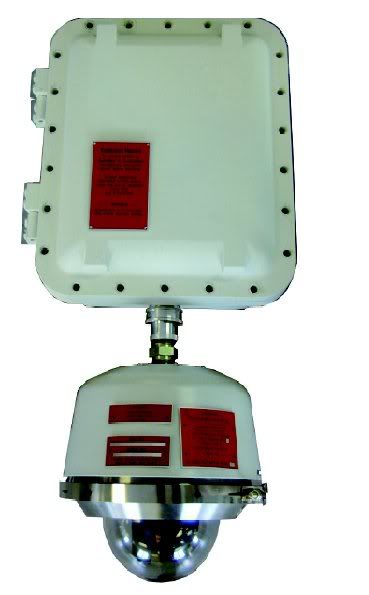Hello All,
I am currently working with various organizations to recommend and deploy surveillance equipment inside various hazaradous areas of Petroleum Refineries. In this endevour we have been asked to provide information and solutions which adhere to the rules and regulations of such locations. In researching equipment that is available in the marketplace which meets these specifciations, I have found very few IP based camera systems which can be powered by PoE and meet the rest of this customers needs. I am unsure if this is due to difficulties of certifying this type of technology for these locations or another reason. We have also come across other methods of acheiving this goal, which would require third party integration of separate components.
I was curious if the forum could clear up a question that I'd come up with in doing this research. I would like to know if it is possible to take a piece of equipment (IP camera) and have this installed into a housing which is already rated to be intrinsically safe, thus making the entire solution intrinsically safe? I assume that either the product would have to be installed or certified by an individual or organization which can approve the Class and Div ratings the 'integrated' component meets? We are looking at providing these recommendations to our customer, and requiring their 'buy-off' on the integrated component, as well as thier installation of this equipment and any related cabling and etc which would connect to this equipment. Hopefully this is an OK question, as i'm trying not to ask "how-to" but "is it possible" and get any additional information which could be provided.
Thank you in advance for your help and consideration.
Canderson.
I am currently working with various organizations to recommend and deploy surveillance equipment inside various hazaradous areas of Petroleum Refineries. In this endevour we have been asked to provide information and solutions which adhere to the rules and regulations of such locations. In researching equipment that is available in the marketplace which meets these specifciations, I have found very few IP based camera systems which can be powered by PoE and meet the rest of this customers needs. I am unsure if this is due to difficulties of certifying this type of technology for these locations or another reason. We have also come across other methods of acheiving this goal, which would require third party integration of separate components.
I was curious if the forum could clear up a question that I'd come up with in doing this research. I would like to know if it is possible to take a piece of equipment (IP camera) and have this installed into a housing which is already rated to be intrinsically safe, thus making the entire solution intrinsically safe? I assume that either the product would have to be installed or certified by an individual or organization which can approve the Class and Div ratings the 'integrated' component meets? We are looking at providing these recommendations to our customer, and requiring their 'buy-off' on the integrated component, as well as thier installation of this equipment and any related cabling and etc which would connect to this equipment. Hopefully this is an OK question, as i'm trying not to ask "how-to" but "is it possible" and get any additional information which could be provided.
Thank you in advance for your help and consideration.
Canderson.


